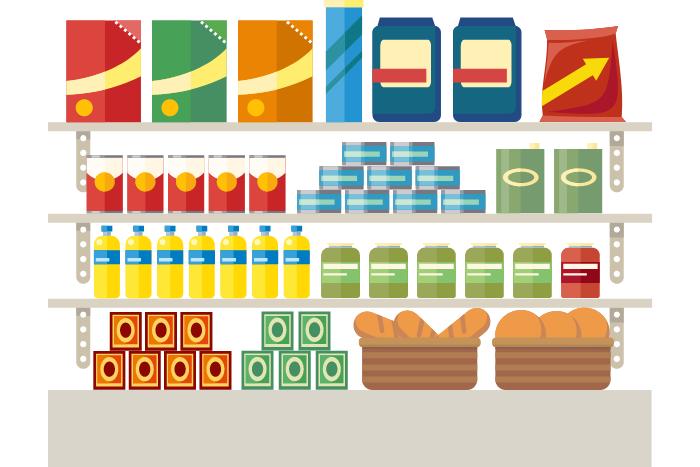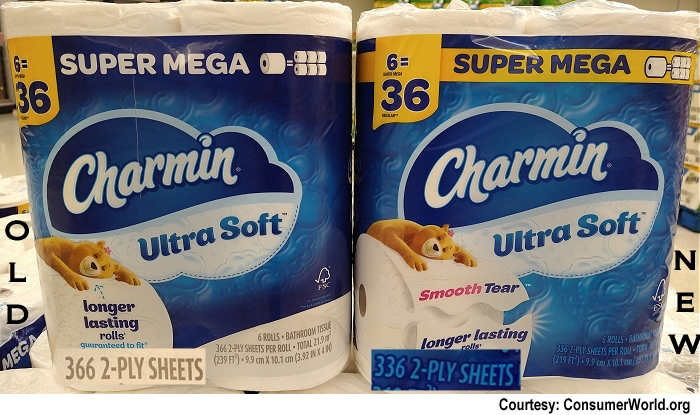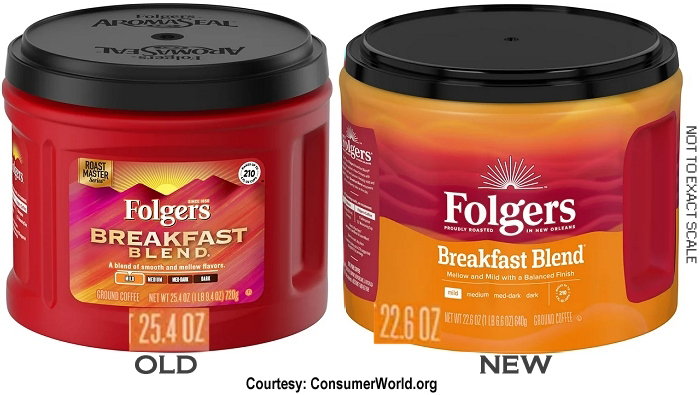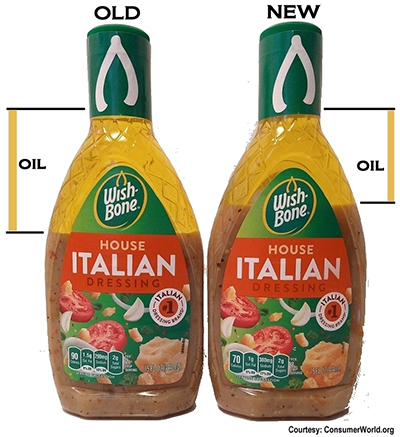Why Are Grocery Prices Still So High?
Last updated March 20, 2024

Click below to listen to our Consumerpedia podcast episode on how to save at the supermarket.
Sticker shock. You feel it every time you go to the supermarket. Prices for eggs, milk, meat, chicken, cereal, and produce are all dramatically higher since the pandemic.
Overall inflation in the last four years was 19 percent, but grocery prices jumped 25 percent, according to the USDA. And once food prices go up, they tend to stay there.
A variety of factors are pushing prices higher, including labor shortages, supply chain disruptions, drought, avian flu, and the war in Ukraine (limiting the global supply of fertilizer).
Consumer demand for more expensive grocery items—something that started during the pandemic—has also led manufacturers and supermarkets to keep prices high.
“Even as food prices have gone up, people have been willing to shell out for higher-quality cuts of meat, or fresh products, or nuts, all of those premium products, and that’s keeping prices elevated as well,” said reporter Abha Bhattarai, who covers the economy for The Washington Post.
Some suggest corporate greed is also to blame. “Outsized corporate profits” are driving more than half of inflation, according to a report from the Groundwork Collaborative, a progressive think tank.
“Even as supply chain snarls have receded and the U.S. economy has stabilized, our research finds that businesses continue to pad their bottom lines at the expense of American families,” said Lindsay Owens, the Groundwork Collaborative’s executive director.
Some good news: Inflation at the supermarket is slowing, and some products have already come down in price. Grocery prices went up 11.8 percent in 2022, but cooled to 1.3 percent last year, Bhattarai reported.
“That’s a dramatic slowdown, but that still means prices are going up, and will never get back to those pre-pandemic prices,” Bhattarai told Checkbook.
Hopefully, prices will stabilize or decline slightly. The USDA expects food prices at grocery stores to drop by about 0.4 percent this year.
Some Price Hikes Are Easy to Miss
Most supermarket shoppers know when the price of milk, eggs, or bread goes up. But it’s not easy to spot when packaged goods are downsized slightly.
This inconspicuous shrinkage—fewer sheets on a roll of toilet paper, skinnier paper towels, less coffee in the package, smaller ice cream containers, fewer chips, cookies, or pretzels in the package—is easy to miss.
As Checkbook previously reported, this product downsizing, often called “shrinkflation,” is a sneaky way to raise prices without upsetting customers.
“Manufacturers know that consumers don’t pay attention to the product package fine print—the net weight on products or the net count on paper products—and they can get away with shrinking the product inconspicuously, which really is a backdoor price increase,” said Edgar Dworsky, publisher of ConsumerWorld.org. He’s been highlighting examples of shrinkflation for more than 30 years.
Downsizing comes in waves, Dworsky said, but since the pandemic, more companies are doing it.
“Shrinkflation tends to be worse in times of inflation, and certainly over the past few years, we’ve seen more examples of this,” Dworsky told Checkbook.
For example, each roll of toilet paper in the Charmin Super Mega package now has 30 fewer double-ply sheets: 336 vs 366. Procter & Gamble downsized the rolls when it added the “smooth tear” scalloped edge. Dworsky remembers that each roll had 650 single-ply sheets when P&G launched the national advertising campaign for Charmin in the 1960s (and Mr. Whipple told us not to squeeze it).

Coffee packages have been downsized repeatedly for decades. I spotted a net weight change in the Folger’s Breakfast Blend coffee container I normally buy. It shrank from 25.4 ounces to 22.6 ounces. But “through the magic of modern science,” Dworsky noted sarcastically, “you still theoretically get the same 210 cups of coffee out of every canister.”

Manufacturers often change the size and shape of their containers to camouflage a reduction in the amount of the product. “For example, a business might use a taller and thinner container that looks similar but holds less product,” according to a report from the Federal Reserve Bank of St. Louis.
An old, 32-ounce Gatorade bottle was redesigned to a more aerodynamic 28-ounce size, but the price remained the same, the report noted. And jars of peanut butter have a little dimple on the bottom, which means less product is inside, but most shoppers won’t notice.
So, is shrinkflation legal? Yes, so long as “businesses clearly mark their products with an accurate weight that allows consumers to compare prices,” the Fed said.
Skimpflation: Same Brand, Lower Quality
“Skimpflation” is another way to give customers less without lowering the price. This happens when a manufacturer reformulates its products by watering them down or using cheaper ingredients—or both—hoping you won’t notice. In either case, you’re getting a lower-quality product for the same price.
As an example, Consumer World called out ConAgra for its new “watered down” version of Wish-Bone salad dressing.
 “They reduced the oil content (and calories) by over 22 percent, and it appears they replaced it with water and over 30 percent more salt,” Dworsky wrote. “Oddly, the amount of garlic was also reduced.”
“They reduced the oil content (and calories) by over 22 percent, and it appears they replaced it with water and over 30 percent more salt,” Dworsky wrote. “Oddly, the amount of garlic was also reduced.”
Consumer World also noted a subtle change in recent years to the ice cream cartons for some familiar brands, such as Breyer’s and Blue Bunny. They’re now called “frozen dairy desserts” because the reformulated products don’t have enough milkfat in them to be called ice cream under federal regulations. So, if your “ice cream” doesn’t taste like it used to, it may not be your imagination.
“I think [skimpflation is] actually, in some senses, more deceptive than shrinkflation,” Dworsky said. “Shrinkflation, if you look, and have a good memory, you can notice that the product has changed. Skimpflation, you don’t know the formula. Do you know how much of a particular cleaning ingredient is in your bottle of Tide? Do you know if they've changed it out for a less expensive one? You've got no idea.”
Products come in so many sizes that it might not be obvious from the package or the price which one is the best value. Unit pricing is the great equalizer. By comparing the unit price of competing products—this could be price per ounce, price per pound, price per serving, or sheets per roll—you’ll see which one is the best deal.
Click here for more from Checkbook on grocery stores and delivery services.
Contributing editor Herb Weisbaum (“The ConsumerMan”) is an Emmy award-winning broadcaster and one of America's top consumer experts. He has been protecting consumers for more than 40 years, having covered the consumer beat for CBS News, The Today Show, and NBCNews.com. You can also find him on Facebook, Twitter, and at ConsumerMan.com.


